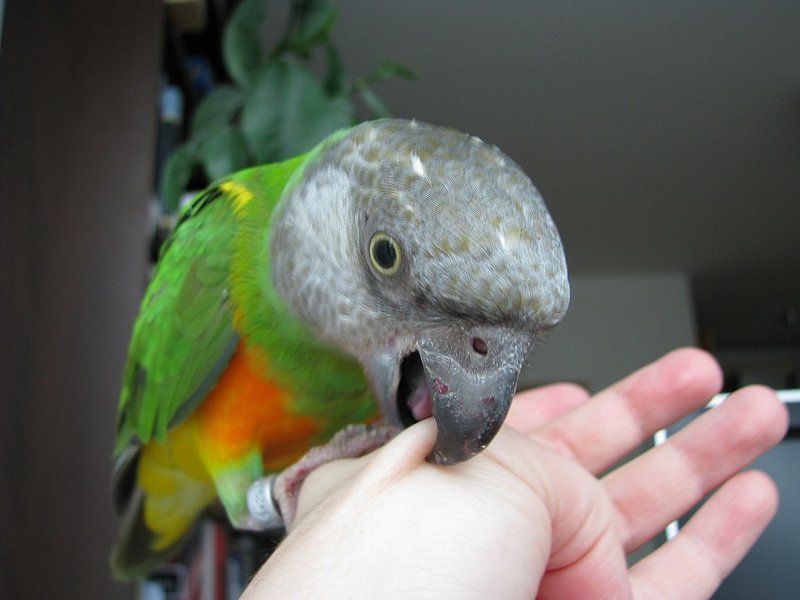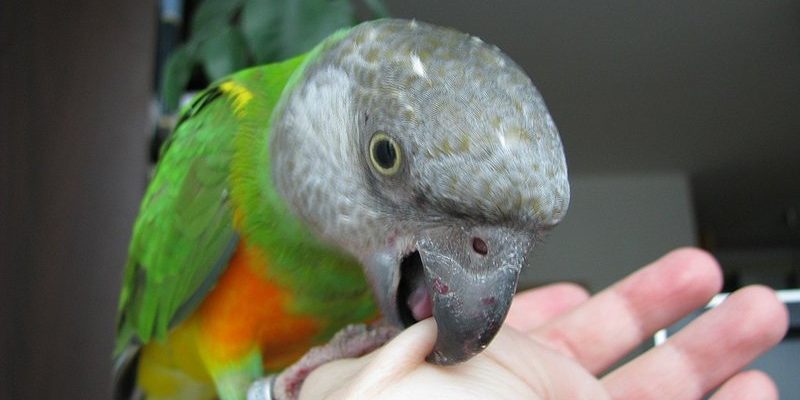
Let’s think about it this way: parrots are not only intelligent creatures, but they also have their own personalities, much like us. Just as we have good days and bad days, so do our avian companions. Understanding why your parrot is acting aggressively can be tricky, but it’s essential for both your bird’s well-being and your own peace of mind.
In this guide, we’ll explore how to handle aggressive or biting behaviors in parrots, whether you have a parakeet, cockatoo, or macaw. We’ll dive into why parrots behave this way and how to create a more harmonious relationship with your feathery friend.
Understanding Aggressive Behavior in Parrots
Understanding why parrots can be aggressive is crucial. Honestly, many times, they aren’t out to hurt us; they’re just responding to their environment or past experiences. Parrots can feel threatened, scared, or territorial, leading to biting or aggression.
For example, if a parrot feels it’s being cornered or doesn’t want to be handled, it might resort to biting. Imagine if someone came into your space unexpectedly; you’d likely feel a bit defensive, right? Similarly, parrots have their comfort zones, and if those are invaded, they can react negatively.
Also, remember that parrots are creatures of habit. Changes in their environment, like moving to a new home or introducing a new pet, can cause anxiety. This stress can lead to aggressive behaviors as they try to communicate their discomfort. It’s all about finding balance and ensuring your parrot feels safe and secure.
Identifying Triggers for Aggression
Next, let’s talk about identifying what triggers your parrot’s aggressive behavior. Observing your parrot can offer valuable insights. Do certain sounds or people make it more irritable? Maybe they get agitated when you reach into their cage or when someone new enters the room.
To keep track, consider keeping a journal of your parrot’s reactions in different situations. Note when it bites, what was happening at that moment, and how you reacted. This record can help reveal patterns and pinpoint triggers. Are there specific times of day when your parrot seems more on edge?
Understanding these triggers is like having a map for navigating your parrot’s emotions. Knowing what upsets them can guide you on how to approach interactions more carefully.
Building Trust with Your Parrot
Once you’ve identified the triggers, it’s time to work on building trust between you and your parrot. Just like any relationship, trust is key. Start slow and allow your parrot to get comfortable with you.
One effective way to build trust is through positive reinforcement. Reward your parrot with treats or praise when it’s calm or engages positively with you. This could be as simple as giving them a favorite snack when they don’t bite or allowing them extra playtime.
Also, try to avoid handling your parrot when it seems upset. Instead, respect their space and approach them gently when they appear more relaxed. Over time, your bird will begin to associate your presence with positive experiences, which can significantly reduce aggression.
Using Proper Handling Techniques
How you handle your parrot matters a lot. Many times, a parrot bites because it feels threatened or uncomfortable with how it’s being held. To avoid this, you can use some simple techniques.
First, always approach your parrot slowly and calmly. Sudden movements can startle them and lead to bites. Use your hand or a perch as an extension of yourself, allowing your parrot to step onto it rather than grabbing or forcing them.
Also, try to avoid reaching directly into their cage, as this can be perceived as an invasion of their space. Instead, encourage them to come to you. Offering a treat or gently talking to them can help make this process smoother.
If your parrot does bite, let out a small yelp to mimic what they might hear from another bird. This can signal to them that the bite was too hard. But do remember this: do not retaliate. Responding with anger or fear can damage the trust you’ve built.
Creating a Comfortable Environment
Your parrot’s environment plays a significant role in its behavior. A comfortable and enriching space can make a world of difference in reducing aggression. Start by ensuring the cage is an inviting place.
Here are some tips for creating a cozy environment:
- Provide stimulating toys: Parrots need mental stimulation. Offer a variety of toys that challenge them, like puzzles or toys that they can shred.
- Vary their diet: A healthy, varied diet can impact mood. Make sure to include fresh fruits and veggies that your parrot enjoys.
- Regular out-of-cage time: Allowing your parrot to explore outside its cage can help reduce frustration and aggression. Make this time interactive by playing games or practicing tricks.
A well-maintained and enriched environment helps your parrot feel safe, reducing the likelihood of aggressive outbursts. Think of it as creating a little paradise where they can thrive.
When to Seek Professional Help
Sometimes, despite your best efforts, you might find that aggression persists. If your parrot continues to bite or shows signs of severe anxiety, it might be time to seek professional help.
Bird trainers or avian veterinarians can provide valuable strategies tailored to your specific parrot. They often have experience with various issues and can help you create a structured plan for addressing aggression.
Don’t hesitate to reach out if you feel overwhelmed. Seeking help doesn’t mean you’ve failed; it shows you’re committed to your parrot’s well-being.
Patience is Key
Finally, remember that change takes time. Just as humans have off days, your parrot might too. Consistency and patience are essential when dealing with aggressive or biting behavior.
Celebrate the small wins. Maybe your parrot let you hold a treat without biting, or perhaps they sat on your shoulder for a few minutes. Each positive interaction builds trust and strengthens your bond.
In the end, your goal is to create a loving relationship where both you and your parrot feel secure and happy. With time, understanding, and some gentle approaches, you can navigate the ups and downs of having an aggressive or biting parrot successfully.
Always keep in mind, a little love and patience go a long way. Your parrot wants to connect; it just needs the right guidance to express that affection without resorting to bites.

